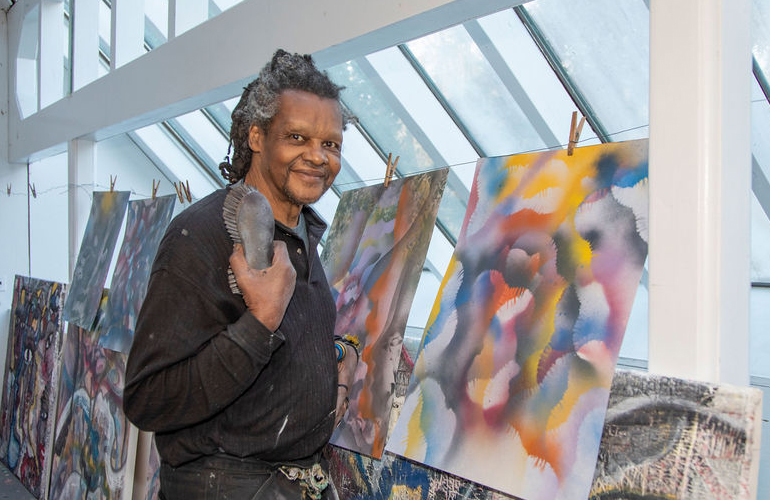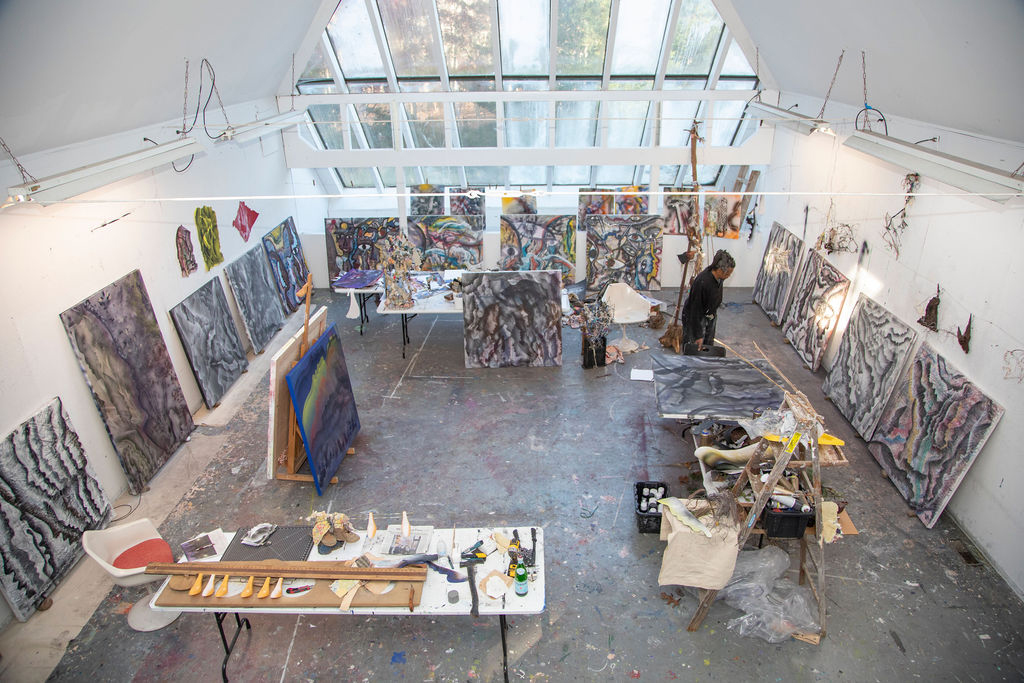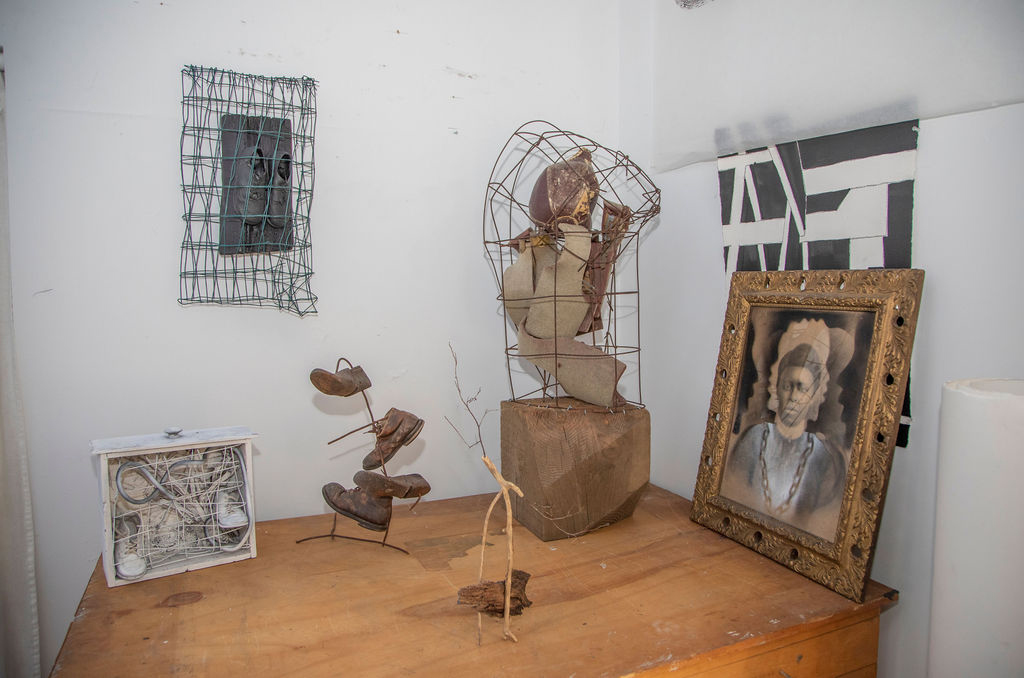Art Finds Lonnie Holley at the Elaine de Kooning House

To hear Lonnie Holley’s life story is to hear a million folk tales that all happen to be true. Taken from his mother in Birmingham, AL at a young age, Holley was put to work as early as 5 years old, picking up trash at the traveling carnival and raised among burlesque dancers. His colorful, challenging beginnings led to a life of remarkable art and creation. Holley is currently the artist-in-residence at the Elaine de Kooning House in East Hampton, and will appear at Guild Hall on Sunday, November 22.
Holley, who hadn’t been to Long Island before the residence, is inspired by the beauty of East Hampton’s Northwest Woods. “It’s a maze of a place,” Holley marvels. “I was thinking about just seeing it from a helicopter or something and experiencing the island itself, but so far the lifestyle of the island is pretty exciting.” Holley has often gone outside in the early morning hours and taken in the beauty and bounty of the land. “Having the acres around [the house] and the type of growth that it has around it, it’s inspiring. Because once you’ve been in the city and you get so used to the hustle and bustle of the city—one would say the concrete jungle where there’s hardly any real interaction with nature like this—the island itself has a way of taking you to another appreciated level of what our ancestors discovered when they got here,” he says, before correcting himself. “Encountered. I wouldn’t say discovered.”

Talking to the artist, who still has a sense of wonder about him after decades of hard work and art, it’s clear he sees the world differently than other people. “I have to look at [Long Island] almost as a wildflower,” he says. “We had a couple of nights where it’s just been rainy and when it’s dry, I go out and move around to the woods. It’s just beautiful to see and experience the aftermath of life because everything has an aftermath of life. We’ve got to remember that as humans. We have to respect that.”
At the Elaine de Kooning House, Holley is working on a number of paintings, sculptures and his signature found-object art. Holley’s early years working the carnivals in the Appalachians, cleaning up trash, helped inspire him to create art from discarded objects. “In a sense, if you look back over my life, my experience with found objects—a lot of people say trash, garbage, debris—is what is left over from the state fair,” Holley explains. “Even before the state fair is completely put together. You see a lot of human efforts to use their skills to put different things together and tear them back down. In that process, things get old and get thrown away. From that experience, I imagine my younger, more childlike experience was taking in the information but not being able to tell what I was seeing.”

Holley is also an improvisational musician. His wide set of talents led to a collaboration with Matt Arnett, son of art collector William Arnett, who was an admirer of Holley’s art since the 1980s. “When William Arnett saw my environment, this is what he saw. He saw so many different…he didn’t see one artist practicing painting. He didn’t see one artist practicing painting or one artist practicing sculpting. In me, I was having all those things going on,” Holley explains. “I can’t do anything else but smile about it because it makes me happy when other people are happy.” Matt has helped Holley record his music, which Holley will perform at Guild Hall.
With a huge body of work, both visual art and music, it’s easy to say that Holley has found great success. But Holley doesn’t like the word. “I don’t say success,” he says. “I think sometimes we allow success to get in the way because we think, ‘I’ve succeeded, I’m a billionaire,’ yet there are still trillions and zillions to accomplish. How many grains of sand could I hold in my hand? I like to appreciate the amount of what I’ve held in my hand.”
See Lonnie Holley in a virtual performance at Guild Hall on November 22. Visit guildhall.org for more information.



